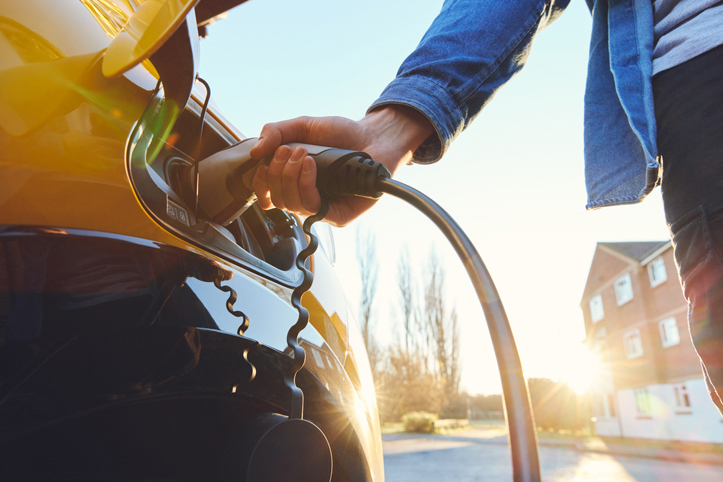All New Cars Sold Must be Electric by 2035: Lawmakers Struggling with Following the Mandate
Safety Info May 22, 2023 0 COMMENTS
By 2035, all new cars sold by companies must be electric. This mandate was passed in 2021, and companies are already finding ways to make that transition. However, it has been an uphill climb for car companies, legislative bodies, and lawmakers.
Virginia legislators passed the Clean Car Law in 2021, adopted from the California standard. Out of the 17 states that have adopted the Californian standard, Virginia was the 15th on the list. The law goes into effect next year, and the first checkpoint is that 35% of all new cars and trucks from the 2026 model onwards must be electric.
However, Republicans strive to reverse the law as they believe the state will not be able to support an EV-only market by 2035. The issues are quite layered and involve varied levels of struggles for the lawmakers and the citizens.
When it comes to the citizens, taking the first step toward EV ownership is quite difficult as the initial cost is high. The price of EVs is higher than gas cars. According to the Kelly Blue Book, the average EV car is priced at just over $61,000. Currently, EVs are seen more as luxuries and are not made for the average citizen in the country. This is one of the major concerns for citizens. However, companies such as Ford and Volkswagen will soon make EVs for people of all classes.
For lawmakers, numerous concerns get in the way of following this mandate. First, people usually pay the Gas Tax, which is used for road maintenance and for a few other purposes depending on how the state allots the taxes. However, for EVs, taxation would become complex as people from different classes would use different EV ranges in different ways. Secondly, the power grid must also be able to support the EVs and offer them enough power supply while ensuring the grid’s other purposes continue to be fulfilled effectively.
While these are just a couple of examples, numerous concerns exist, such as maintenance costs, systematic facilitation of the EV market, and more. However, the state of California has taken several measures to incentivize EV manufacturing and purchasing. For instance, the citizens will receive federal tax incentives, which would decrease the cost required to buy and own an EV. The state also incentivizes car companies to make EVs lesser than about $21,000 for the model years between 2026 and 2028. Besides these, the state will also offer perks to people who charge during off-hours and more.
According to Austin car accident attorneys, the motive behind this push towards electric vehicles is to reduce the emissions from vehicles which is one of the main sources of pollution in the state of Virginia. The idea of reducing the negative impact on the environment is one of the primary reasons the states are moving toward the EV market. However, electric vehicles come with several benefits for the consumers too, despite their higher initial cost. Firstly, consumers save a considerable amount on thecost of fuel compared to non-electric vehicles. Secondly, many states including California offer numerous tax benefits and incentives for electric vehicle owners which can lessen the overall costs. Moreover, electric cars are much more efficient and easier to drive compared to gas vehicles and are safer to drive too.
Overall, EVs seem to be the future of both commercial and private vehicles, especially with the state providing incentives for the same. The question is how lawmakers realize this future and whether these vehicles become the norm for people of lower socio-economic classes.
RELATED ARTICLES
Recent Posts
- Major Theft Ring Busted: Over $200,000 in Stolen Lego Sets Recovered in Eugene, Oregon
- Judge Denies Texas’ Bid to Shut Down Migrant Shelter Network in El Paso
- Single Mother in Memphis Seeks Help for Troubled Son Amid Rising Concerns
- California’s Proposition 47 Reform Sparks Intense Political Debate Over Public Safety
- U.S. Man’s Social Security Benefits Denied Over Citizenship Confusion
Categories
Our Supporters
Gold Supporters
Christopher Simon – Atlanta Truck Accident Lawyer
Skiver Law Firm – Phoenix Truck Accident Lawyer
Winer, Burritt & Scott, LLP – Los Angeles Clergy Abuse Law Firm
Michael E. Fenimore P.A. – Pensacola Car Accident Lawyer
Pillsbury & Coleman, LLP – San Mateo Long Term Disability Lawyer
The Law Office of Randall J. Wolfe, P.C. – Oregon City Personal Injury Lawyer
Davies Hothem Injury Law – Buford, GA Car Accident Attorney
Houston Federal Criminal Defense Attorney
Darrow Law Firm – Houston Federal Crime Lawyer
Kansas City Personal Injury Lawyer
Atlanta Truck Accident Attorney
Aitken *Aitken* Cohn Trial Lawyers – Santa Ana Personal Injury Attorneys
Dawson Law Group- Portland Personal Injury Attorneys
CT Mediation Center- New Haven Family Law Attorney
Little Rock Personal Injury Lawyer
Katy Car Accident Lawyer
Franklin Divorce Attorney
Palermo Law- Long Island Personal Injury Lawyer
Dan Rose – San Francisco Car Accident Attorney
Taylor Siemens – Liberty, MO Personal Injury Attorneys
Pfeifer Law Firm – Little Rock Car Accident Lawyer
Walkup, Melodia, Kelly & Schoenberger – San Jose Car Accident Attorney
Solomon, Dwiggins, Freer & Steadman – Las Vegas Business Litigation Lawyer
Roane Law – Asheboro NC Car Accident Lawyer
Dorsch Law Firm – Overland Park Estate Planning Attorney
The Tennessee Sledgehammer – Hermitage, TN Car Accident Lawyer
Cook Law Group – Gainesville, GA Car Accident Lawyer
Simon Bridgers Spires – Atlanta Personal Injury Lawyer
Injury Law Associates – Kansas City Motorcycle Accident Lawyer
Potts & Potts – Honolulu Personal Injury Attorney

